このプロジェクトでは、Terraform で簡単な Google Mirror API の主要な機能のデモを行います
クイック スタート プロジェクトの完全デモ版を見るには、次のページにアクセスしてください: https://glass-python-starter-demo.appspot.com. それ以外の場合は、この後、独自のバージョンをデプロイする方法を説明します。
前提条件
App Engine SDK for Python - Python クイックスタート プロジェクトは、App Engine を使用して実装されています。必要な Python App Engine SDK を使用して、プロジェクトを開発、デプロイします。 プラットフォームに応じてインストーラを実行するか、zip ファイルを解凍します。 便利です。
Google App Engine インスタンスの作成
クイック スタート プロジェクトを Google App Engine のインスタンス上でホストする必要があります。
- http://appspot.com に移動します。
- [アプリケーションを作成] をクリックし、
appspot.comでホストされる一般公開の Google App Engine インスタンスを作成します。 - アプリケーションにアプリケーション識別子を与え、認証はすべての Google に対して公開したままにします アカウント ユーザー。アプリケーション ID は、後でクイック スタート プロジェクトを構成するために必要になります。
Google API Console プロジェクトを作成する
次に、Google Mirror API へのアクセスを有効にします。
- Google API Console に移動して、新しい API プロジェクトを作成します。
- [サービス] をクリックし、新しいプロジェクトで Google Mirror API を有効にします。
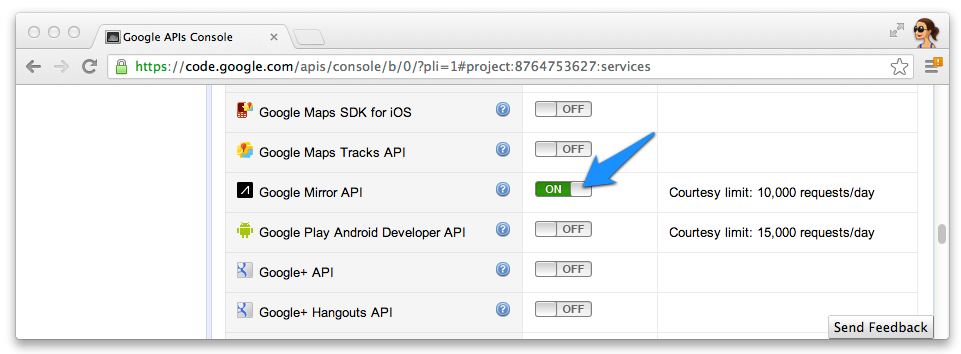
- [API Access] をクリックして、ウェブ アプリケーション用の OAuth 2.0 クライアント ID を作成します。
![Google API Console の [API Access] セクション](https://developers.google.cn/static/glass/images/api-console-client-id.png?hl=ja)
- Glassware の製品名とアイコンを指定します。これらのフィールドは OAuth 権限付与に表示される
画面に表示されます
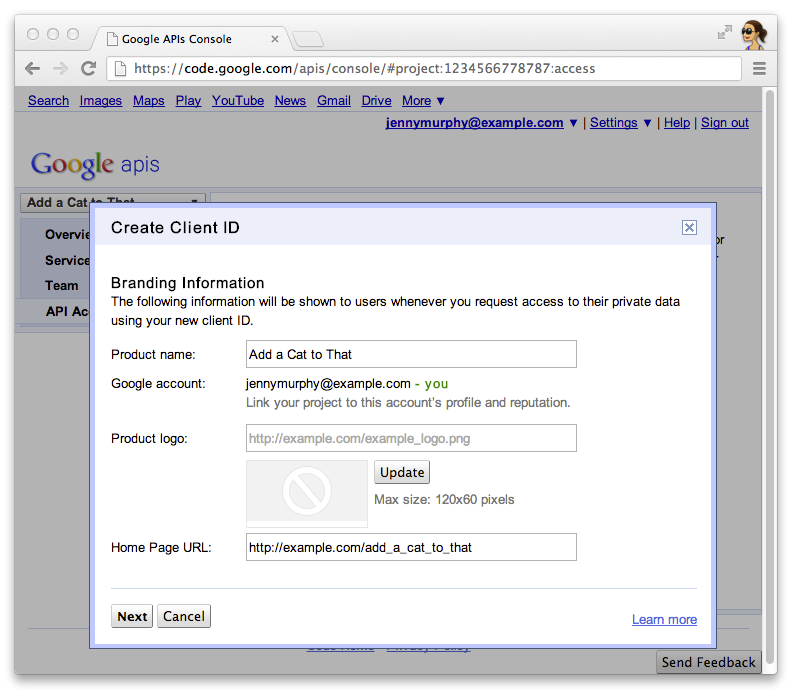
- [ウェブ アプリケーション] を選択し、ホスト名に任意の値(
localhostなど)を指定します。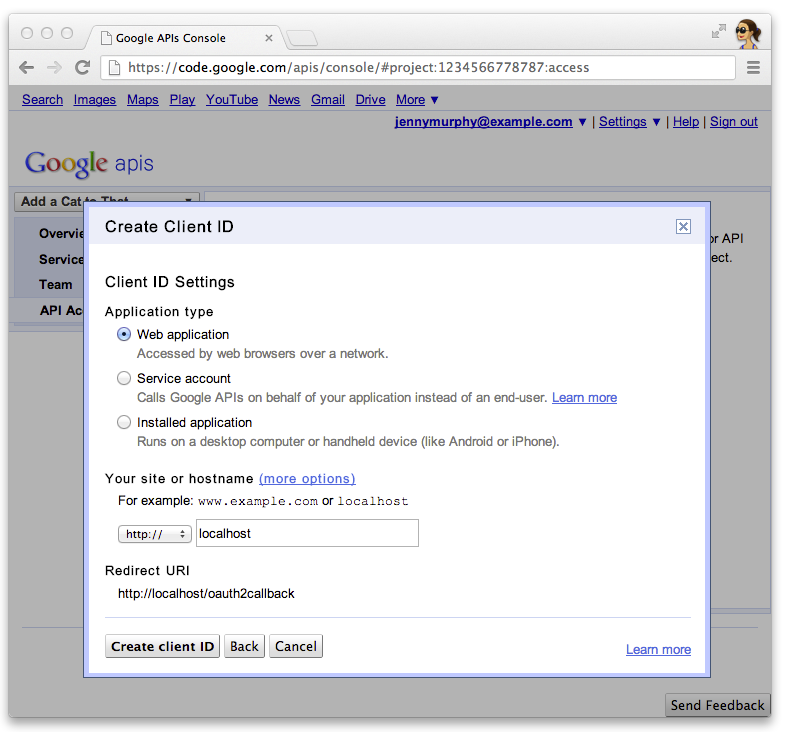
- クライアント ID の [設定を編集...] をクリックして、リダイレクト URI を指定します。具体的にご記入ください
http://localhost:8080/oauth2callbackと App Engine のコールバック URL たとえば、https://myappengineinstance.appspot.com/oauth2callbackのようにします。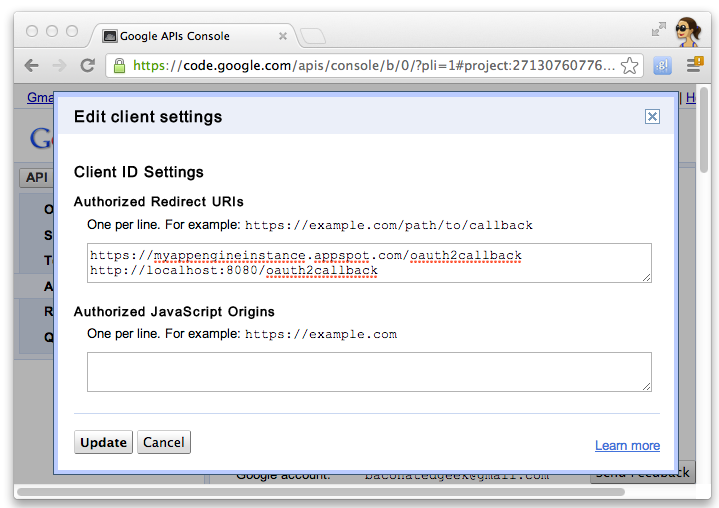
- Google API コンソールのクライアント ID とシークレットをメモします。必要なもの
クイック スタート プロジェクトを構成します。
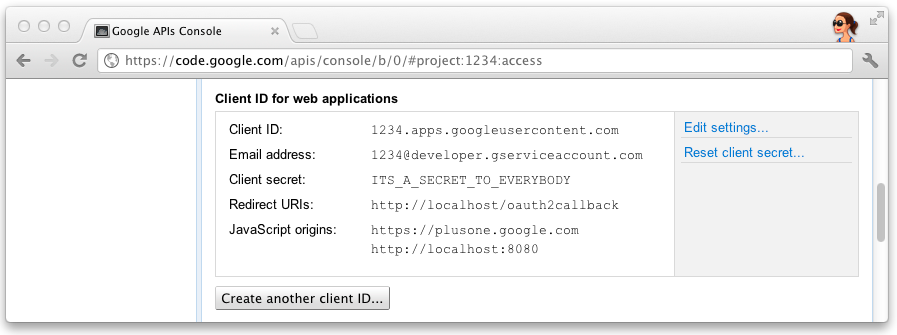
プロジェクトの構成
API クライアント情報を使用するようにクイック スタート プロジェクトを構成します。
client_secrets.jsonにクライアント ID とシークレットを入力します。{ "web": { "client_id": "1234.apps.googleusercontent.com", "client_secret": "ITS_A_SECRET_TO_EVERYBODY", "redirect_uris": [ ], "auth_uri": "https://accounts.google.com/o/oauth2/auth", "token_uri": "https://accounts.google.com/o/oauth2/token" } }
- セッション Cookie を格納する
session.secretファイルを生成します。$ python -c "import os; print os.urandom(64)" > session.secret
app.yamlを編集して App Engine アプリケーション ID を入力します。application: your_app_engine_application_id version: 1 runtime: python27 api_version: 1 threadsafe: true ...
プロジェクトをデプロイする
App Engine Launch GUI インターフェースで青色の [Deploy] ボタンをクリックするか、このシェルを実行します コマンドを使用してコードをデプロイします。
$ appcfg.py --oauth2 update .

